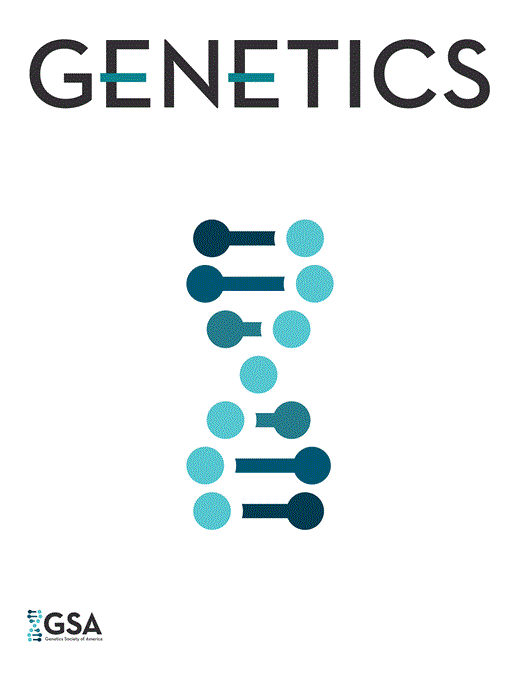-
PDF
- Split View
-
Views
-
Cite
Cite
Angelos Kalogeropoulos, Pierre Thuriaux, GENE CONVERSION AT THE GRAY LOCUS OF SORDARIA FIMICOLA: FIT OF THE EXPERIMENTAL DATA TO A HYBRID DNA MODEL OF RECOMBINATION, Genetics, Volume 109, Issue 3, 1 March 1985, Pages 599–610, https://doi.org/10.1093/genetics/109.3.599
Close - Share Icon Share
ABSTRACT
A hybrid DNA (hDNA) model of recombination has been algebraically formulated, which allows the prediction of frequencies of postmeiotic segregation and conversion of a given allele and their probability of being associated with a crossing over. The model considered is essentially the "Aviemore model." In contrast to some other interpretations of recombination, it states that gene conversion can only result from the repair of heteroduplex hDNA, with postmeiotic segregation resulting from unrepaired heteroduplexes. The model also postulates that crossing over always occurs distally to the initiation site of the hDNA. Eleven types of conversion and postmeiotic segregation with or without associated crossover were considered. Their theoretical frequencies are given by 11 linear equations with ten variables, four describing heteroduplex repair, four giving the probability of hDNA formation and its topological properties and two giving the probability that crossing over occurs at the left or right of the converting allele.—Using the experimental data of Kitani and coworkers on conversion at the six best studied gray alleles of Sordaria fimicola, we found that the model considered fit the data at a P level above or very close (allele h4) to the 5% level of sampling error provided that the hDNA is partly asymmetric. The best fitting solutions are such that the hDNA has an equal probability of being formed on either chromatid or, alternatively, that both DNA strands have the same probability of acting as the invading strand during hDNA formation. The two mismatches corresponding to a given allele are repaired with different efficiencies. Optimal solutions are found if one allows for repair to be more efficient on the asymmetric hDNA than on the symmetric one. In the case of allele g1, our data imply that the direction of repair is nonrandom with respect to the strand on which it occurs.



